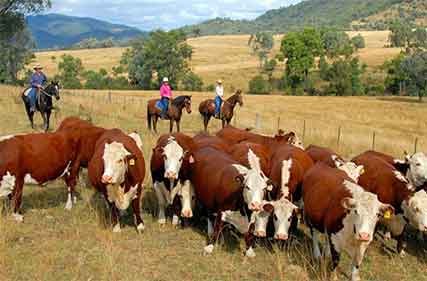 With large areas of Australia having received below average rainfall, the ABRI Extension Services Team felt it would be timely to remind beef breeders of the considerations when collecting performance information for BREEDPLAN during drought.
With large areas of Australia having received below average rainfall, the ABRI Extension Services Team felt it would be timely to remind beef breeders of the considerations when collecting performance information for BREEDPLAN during drought.
Beef producers are sometimes reluctant to submit performance data collected in drought conditions due to concerns that lighter weights will correspond to lower EBVs.
Thankfully, this is not the case. While it is true that the average performance of a group will likely be lower relative to the average performance of a group in a good year, there will still be variation in performance within each group.
It is this variation in how each anmial has perfromed relative to the other similarly treated animals that is imppeortant to the BREEDPLAN analysis, amnd not the raw measurements.
However, there are a number of considerations that beef producers should be aware of.
- If early weaning, remember that BREEDPLAN can only analyse the 200 day weight of calves that are older than 80 days of age when the weight is recorded
- BREEDPLAN can analyse 200 day weights on each animal. Therefore, if early weaning it may be beneficial to weigh the calves at weaning and then take a later weight.
- Mature cow weights should be collected within two weeks of collecting the 200 day weights of their calves. If you delay 200 day weight recording, you should also delay the collection of mature cow weights.
- Only record ultrasound scan informaiton on animals that are in adequate condition especially when scanning for fat depth and IMF. Ideally, animals should have a minimum average rump fat depth of 4-5mm.
- Fertility performance information of cows running under drought conditions can be vaery vakuable information to the BREEDPLAN analysis, as drought generally places more pressure on female fertility than in a good season.
In addition, some beef producers may find that due to the constraints of drought, they are unable to continue with their normal performance recording schedule. If you are in this situation, you could consider the following options as interim measures.
- Restricting your performance recording to a core of important traits (consider which traits are important to you and/or your clients breeding programs)
- maintain full trait recording but limiting this to a single sex (e.g. bull calves)
If you choose to undertake either of these options, you should aim to return to your full performance recording program for the whole herd as soon as possible (i.e. once drought conditions ease)
-ABRI
